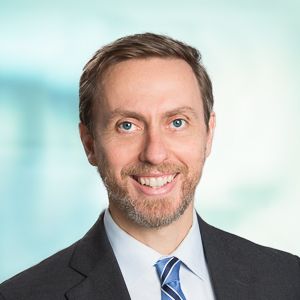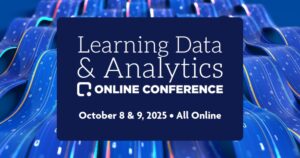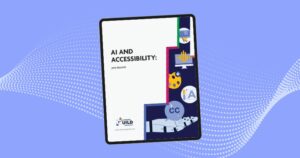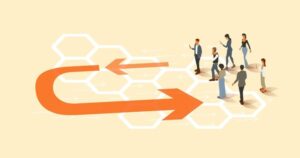Your cart is currently empty!

Metafocus: Interview with Maria Johnson of UT Dallas Virtual Reality Social Cognition Training Department

Nearly a decade ago, the Center for BrainHealth at theUniversity of Texas–Dallas created a virtual reality social cognition training (VR-SCT) department. They’re doing reallycool work using VR for cognitive development, with a focus on children withautism, ADHD, and other social learning differences.
From the VR-SCT website:
The Brain Performance Institute atCenter for BrainHealth offers a scientifically based social cognitive trainingprogram that uses a motivational virtual-learning platform. Clinicians coachclients through real-life scenarios in a video game–like environment,providing a safe place to practice social interactions in a virtual realityschool, home, playground, or coffee shop.
In the virtual world, face-trackingtechnology allows users to see their own and others’ facial emotions andreactions in real time. An expert clinician initiates nonscripted conversationthat instills social brain strategies to help individuals reach personal goals.
This approach has been shown to build social-reasoning skills and increaseconfidence in real-world interactions. Individuals practice initiatingconversations, navigating through social dilemmas, sharing thoughts and ideas,and developing social interactions.
I recently conducted an interview with Maria Johnson, thehead of pediatric social cognition virtual training programs at the Center forBrainHealth/Brain Performance Institute. We discussed this innovative programand her involvement. She shared what’s exciting, what’s surprising, and what’sstill unknown. She finished with an inspiring message for learners of all agesand abilities. The VR-SCT program demonstrates how advancements in VR createnew educational tools, research methods, and whole fields of exploration thatcan greatly benefit the eLearning community.
Note: Today’s column is not an advertisement or endorsement fortheir program; they’re simply providing a fantastic service that we can alllearn from. I found it fascinating, and I think you will, too. (The interviewhas been lightly edited.)
Matt Sparks (MS):What is the mission of the program?
Maria Johnson (MJ):To deliver science-based innovations that enhance how individuals think, work,and live. For our pediatric virtual reality social cognition training (VR-SCT)population, our mission extends to make positive changes in the lives of thosewith autism, ADHD, and other social-learning differences. We aim to prepare oursocial learners for success and empower them with strategies to unlock theirbrains’ true social potential.
MS: How did theprogram come into being? Who started it and why? Is there a story behind this?
MJ: In 2008, ourVR-SCT was developed by cognitive neuroscientists, clinicians, and gamedevelopers at the Center for BrainHealth at the University of Texas at Dallas.We wanted to explore the capabilities of social-reasoning training using animmersive virtual reality platform to help individuals achieve socialindependence and confidence.
In 1999, Dr. Sandra Bond Chapman founded the Center forBrainHealth, a research institute dedicated to enhancing brain health inhealth, injury, and disease, with a vision of improving lives today andtranslating groundbreaking discoveries into practical clinical application. In2013, the vision brought about the establishment of the Brain PerformanceInstitute, a place that gives the community access to science-basedinnovations. To date, the social cognition program is one of a suite ofprograms at the Brain Performance Institute that helps people of all ages—fromschoolchildren to healthy adults, as well as those affected by Alzheimer’sdisease and other forms of dementia—learn how to enhance their brain health andperformance.
MS: Who is atypical student or client?
MJ: Any child whois struggling socially, ages eight and older. Our program is best suited forstudents with autism, ADHD, social anxiety, shy or withdrawn behavior, or socialcommunication challenges who are missing social connections with their peers,family members, teachers, and coaches. We recommend that students have strongverbal language skills, can follow two-step directions, and have at or abovenormal cognition. Children with dyslexia, dysgraphia, and learning andattention challenges are not excluded from the program.
MS: Why doclients come to your lab? What problems do they have? What do they hope to accomplish?
MJ: Ultimately,creating friendships and knowing how to recognize a good friend from someonewith “tricky” intentions is what we hear most from families. Typically, parentswill reach out to us because their child is struggling with making and keepingfriends, managing social conflicts (disagreements with peers), initiating andmaintaining conversations with others, and expressing their thoughts, feelings,and opinions pro-socially. Parents really hope that their children will becomemore independent and conversational socially, and not rely on others (parents,teachers, siblings, etc.) to “force” them into social interactions. Someparents want their children to learn how to stand up for themselves and makestrong social choices if they are being picked on. Other [parents] want to helpremedy the challenges their child’s “inflexibility/black-and-white thinking”pose to working cooperatively and collaboratively with other children. Overallself-assertion and adaption is a central theme.
MS: Can you tellme about a success story?
MJ: The biggestsuccess stories are always the clients who reach a point where they feel theyhave control over their social environment and that they have strategies thatthey can use across settings. A specific example comes to mind about a16-year-old client who had fallen victim to cyberbullying, and her self-esteemreally took a hit. When she first started our program, ADHD and anxietysymptoms were causing significant challenges. She had a hard time expressingher ideas and viewing the bigger picture of social interactions. By the end ofthe program, she felt she was in control of her social destiny and reportedthat she felt less confused and more confident in her day-to-day interactions.
MS: Can you tellme about a difficult case?
MJ: The most difficult cases are usually clients who areseen as “making the choice” to be distant or defensive when that is not thecase at all. The biggest challenge is finding ways to introduce strategies thatthey see as beneficial to them, and our virtual platform aids tremendously inthis. In traditional therapy models, I would give a resistant client a strategyand have them practice it all week long. The downside was, the feedback theyreceived as they tried to implement the new concepts in the real world wasunpredictable. However, with our [VR] technology, I can give them thestrategies, and then they can practice the concepts and ideas immediately inthe virtual world where our clinician team has control over the intensity andtype of feedback they receive. This allows clients to begin to shift into amore malleable mindset where they work with the coach collaboratively. Thisshift is where we see growth and better insight develop, thus they are able toreally start considering the impact they are making on others.
MS: What is mostexciting about the work you’re doing there?
MJ: I love beinga part of such an innovative approach to enhancing the way people think, reason,and relate to each other using virtual technology. Our ability to quicklytranslate science research into tangible programs for the people who need themis exciting. It typically can take more than 40 years for neuroscientificresearch to be translated into services, so for us to be part of anorganization that is doing this so quickly and seeing meaningful results is themost rewarding. Additionally, I enjoy collaborating with the other teams in thebuilding that are working with different populations. This multidisciplinaryapproach to enhancing and creating new services is very inspiring andmotivating, moving us toward being THE leaders in brain health locally andnationwide.
MS: What is mostsurprising about the work you’re doing?
MJ: Thestatistically significant behavioral and cognitive change that takes placeafter just 10 hours of training is remarkable. Science shows that short,intensive, and immersive training is how our brains learn best. This allowsfamilies to see results much more quickly than traditional intervention models.Once the student completes the initial 10 hours of training over a five-weekperiod, we can make recommendations for occasional booster sessions customizedto clients’ specific social needs.
MS: Whatquestions remain unanswered about the work you’re doing?
MJ: Currently, weare investigating whether a more immersive experience could enhance the clients’experience and outcomes. Also, we are studying the social brain and how theamygdala (our emotional brain) can override the frontal lobe (our logic andreasoning brain) when experiencing states of anxiety, fear, depression, or mooddysregulation. We are exploring other avenues in which virtual reality trainingcan better support social-emotional and mental health. We currently haveresearch underway that may lead to new programs and solutions in these areas.
MS: What couldeducators or trainers learn from your work?
MJ: The brain isresilient. We do not have a predetermined set of cells that limits ourintellectual and cognitive capacities. We can engage our minds in innovativeways to promote brain health and brain performance at any age. At the Centerfor BrainHealth and its Brain Performance Institute, children do not “age out”of opportunities to unlock their potential; the window is not closed if you donot get early intervention services. Our platform and training reachesindividuals across the age span and diagnosis.
MS: Besides yourwebsite, what other resources (books, journals, websites, podcasts, etc.)should someone check out if they’re interested in learning more?
MJ: We encouragereaders to attend our Center for BrainHealth February lecture series; participate in a high-performancebrain training—programs are available for educators, corporations, executives,and teens; and subscribe to our BrainMatters newsletter.We have several videos on our YouTube channeland are always updating our Facebook page with current events and happenings at the Center forBrainHealth. (Editor’s note: This interview was conducted while the February lecture serieswas in progress. The series has ended, but full-length videos of the lecturesare posted here.)
MS: Do you havean “ask” for me or my readers? How can we help you?
MJ: We really want your readers to know that youare never too old or too young to change your brain. Almost anyone, includinghigh performers as well as those who may have struggled academically, has theability to unlock more brain potential. Learn more at the Center for BrainHealth website.





